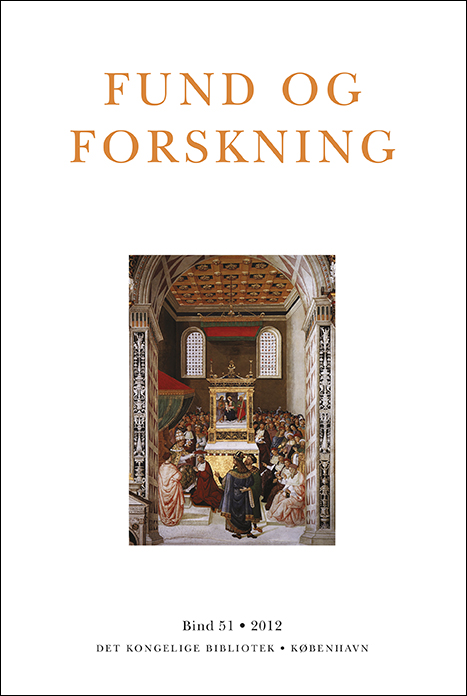Saxos boginddelinger og deres ideologier
DOI:
https://doi.org/10.7146/fof.v51i0.41265Resumé
In the first part of this joint paper on book divisions and their ideologies in the Gesta Danorum of Saxo Grammaticus (ca. 1200), Ivan Boserup points out that the edition of Saxo published by Karsten Friis-Jensen in 2005 is the first since the discovery of the Angers fragment in 1879, which is not in any way dominated by the endeavor to use the Angers fragment as a stepping stone for radical textual criticism of the Paris 1514 edition, i.e. the Editio princeps which is our main textual source to Saxo’s work. In contrast to the 1931 edition of Jørgen Olrik and Hans Ræder, and to scholars that have postulated that the Paris edition of 1514 was more or less rewritten throughout by a medieval or renaissance editor, Friis-Jensen has defended the text of the Paris edition by showing that it coincides basically with all medieval fragments (except the Angers fragment) and with medieval quotations and paraphrases. Although agreeing with Friis-Jensen’s approach, Boserup argues that Friis-Jensen has been misled to believe that the Compendium Saxonis stems from this ‘medieval Saxo-vulgate’ rather than from the manuscript of which the Angers fragment is a part, as argued in 1920 by Emil Rathsack.
According to Boserup, the recognition of the Paris 1514 edition as Saxo’s last and final version of his work invites to a reconsideration of the alternative book division found in the Compendium Saxonis and, supposedly, in its archetype, the ‘Angers manuscript’.
In the second part of the paper, Thomas Riis re-visits the book divisions which he previously treated in his dissertation in 1977. Combining a close textual analysis with evidence from seals, coins, imagery, and the arengae of charters, Riis suggests that the ‘original’ book division found in the Compendium Saxonis manuscripts reflects an “aggressive” royal ideology orchestrated by archbishop Absalon in the second half of the twelfth century. In contrast, the book division of the ‘medieval Saxo-vulgate’ represented mainly by the Paris 1514 edition can be interpreted as the result of the impact on Saxo of the ecclesiastically focused ideology of Absalon’s successor as Archbishop of Lund, the renowned theologian Anders Sunesen (Andreas Sunonis).


